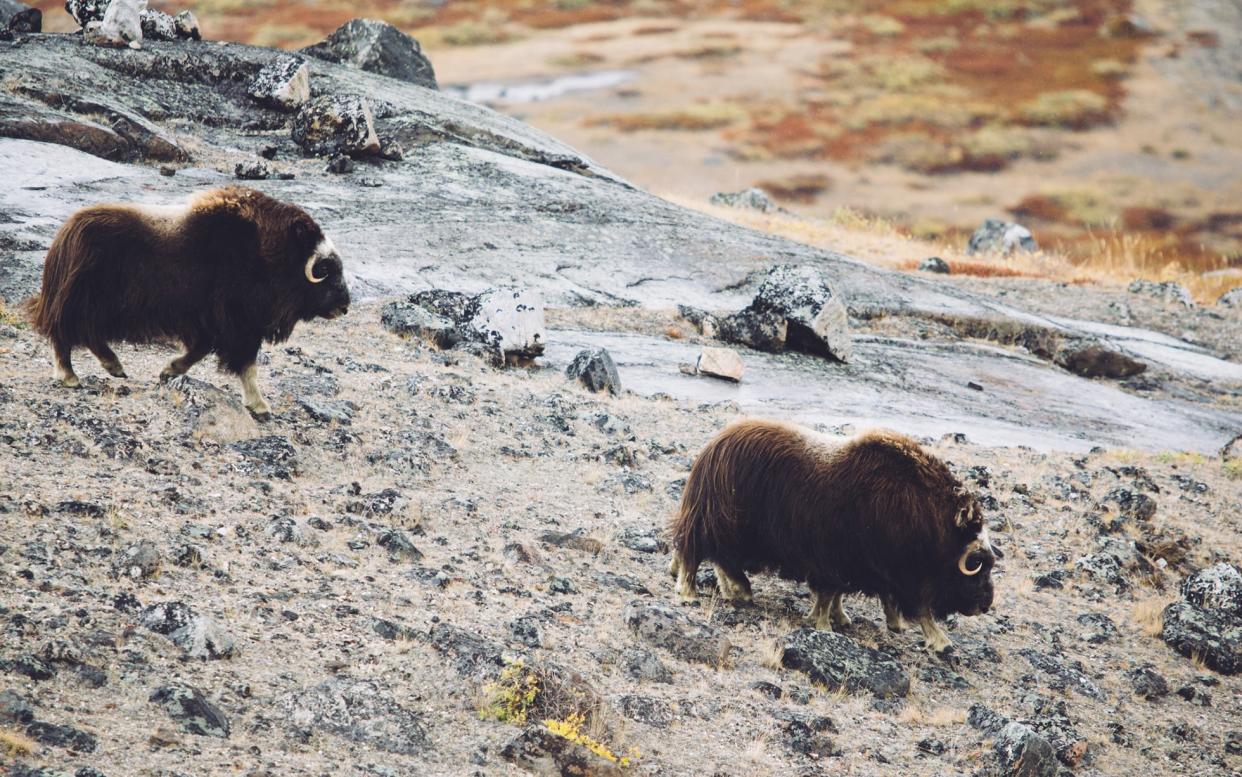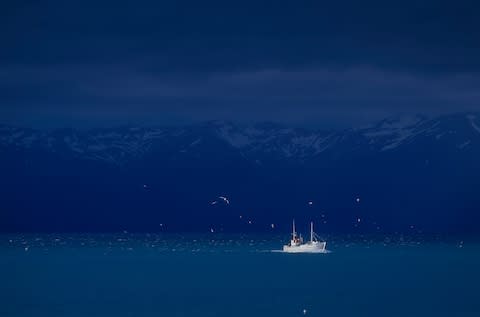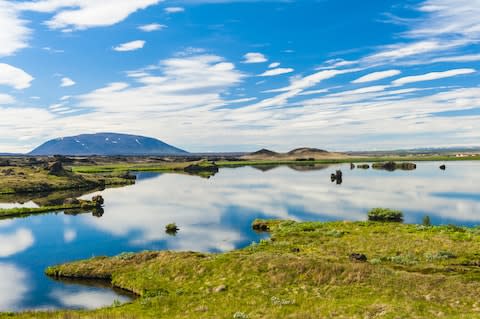Safari Europe: 13 incredible weekend wildlife holidays

Brown bears padding. Sperm whales fluking. Wolverines marauding. Long-tailed mayflies rushing. Dolphins bow-riding. Musk ox hulking… All these spectacles – and more – can be witnessed in the wild without leaving Europe. And as our selection on these pages shows, a wealth of wildlife sightings can be compressed into a single weekend break, in destinations as mainstream as Vienna, the Loire and Madeira – and even from the upper deck of a ferry as it plies the Bay of Biscay.
Once a byword for Attenborough-style adventures in far-flung places, wildlife holidays have become entirely compatible with low-cost, high-frequency international travel. Below are blueprints for 13 wildlife mini breaks – one for every week throughout June, July and August. So whenever you have a summer weekend free to immerse yourself in all things European and natural, there is a suggestion for you.
1. Italy, June 2-3
Where
Gran Paradiso National Park, Italy
What
Alpine ibex, Alpine chamois, Alpine marmot
The joy of Gran Paradiso – at least around the village of Valsavarenche, in the Aosta Valley – is that interesting animals are widespread. Almost any walk from the village or from the head of the valley at Pont will bring wildlife joy. In early summer, the three target mammals are hard to miss. The marmot is everywhere. Alpine chamois is all over the place, from low down to high up. You will see Alpine ibex from almost any path above 1,500m. In the evenings, some even frequent Tighet village car park and roadside fields at Pont.

But what are we looking for exactly? Ibex and chamois are mountaineering goats, the former stocky, thick-necked and big-bottomed; the latter slighter, with short horns and a racoon-like mask. The marmot is somewhere between a chipmunk and a beaver – with a squirrel’s bushy tail. Also look out for butterflies: Glanville fritillary, green hairstreak, small blue and possibly even swallowtail and Apollo.
How
Fly to Turin, then a 1hr 50min drive to Valsavarenche.
Accommodation:tinyurl.com/gp-accommodation
2. Iceland, June 9-10
Where
Husavik and Lake Myvatn, Iceland
What
Humpback, minke and blue whale, waders, red-necked phalarope
Several companies in Husavik, on Iceland’s north coast, offer whale-watching trips into Skjalfandi Bay – and success rates are very high. Humpback whales are encountered on nine trips out of 10. Also frequently seen is minke whale, but what everyone yearns to see is the blue whale, the mightiest creature ever to have graced Earth. Chances may seem slight – perhaps just 10 per cent over the season as a whole – but from May to July, prospects leap.

Drive 50km south and you come to Lake Myvatn, the “lake of midges”. The insects don’t bite, but they do provide plentiful food for waders: snipe, common redshank, whimbrel and golden plover. The shorebird star, however, is the red-necked phalarope – tiny, tame, swimming buoyantly and spinning unendingly. Many of north Iceland’s tiny pools and roadside ditches harbour phalaropes – but nowhere more so than in the Lake Myvatn wetlands.

How
Fly to Keflavik, 45mins by taxi from Reykjavik domestic airport. From there take a 45min flight with Eagle Air (eagleair.is) to Husavik. For whale-watching operators, see icewhale.is.
Accommodation:hostel.is
3. Hungary, June 16-17
Where
Tiszakurt (for the River Tisza) and Hortobagy National Park, Hungary
What
Long-tailed mayfly, amphibians
It is 4pm on a sultry mid-June afternoon. The River Tisza appears bloated, viscous, opaque and apparently lifeless. But at 5pm, something remarkable happens. The river starts to burst with life – literally. After two years living underwater as crustacean-like larvae, male long-tailed mayflies pop through the meniscus to transform themselves into handsom insects and mate. The only sound is the whistling of millions of wings as they fertilise the eggs of every female they can. By 6.30pm, the first of the spent males are dying, their bodies littering the water. The females lay their eggs upstream before they too expire.

It’s what locals call Tiszaviragzas (“the blooming of the Tisza”), for you the culmination of a weekend spent 150km upstream in Hortobagy National Park. Key species there include fire-bellied toads, dragonflies, terrapins and tree frogs.
How
Fly to Budapest and hire a car for the 1hr15min drive southeast to Tiszakurt, then on to Hortobagy (hnp.hu/en/szervezeti-egyseg/tourism), another 45mins.
Accommodation: Hortobagy village has several options (search booking.com) while the town of Szolnok is closest to the mayfly sites.
14 amazing wildlife holidays on UK shores
4. France, June 23-24
Where
La Brenne Regional Nature Park, Centre-Val de Loire, France
What
Dragonflies (lilypad whiteface, yellow-spotted emerald), Brenne marsh-orchid, whiskered tern
From the air, this region – a 2hr drive south from Paris – resembles a shattered mirror, the glistening fragments aggregating into one of Europe’s most vital wetlands. However, every etang (pond) is man-made, the result of a huge drainage programme in the Middle Ages. The ponds now serve as commercial fisheries, restricting wildlife to the most sensitively managed examples.

At Etang de Bellebouche you can view nesting purple and night herons from either of two hides – as well as yellow-spotted emerald dragonflies, with green eyes and golden dots the length of their abdomens. Etang Vieux is the place to head for butterflies, while along the road at Saulny you might see Brenne marsh-orchid, a pink endemic flower. Look out for lilypad whiteface dragonflies along the boardwalk to the hide at Etang Cistude (within La Cherine National Nature Reserve) and for whiskered terns nesting among the floating vegetation at Etang de la Sous.
How
Fly to Poitiers from Stansted or Edinburgh, then drive.
Accommodation: parc-naturel-brenne.fr/en/home/organizing-your-stay/accomodation/favorites
5. Finland, June 30-July 1
Where
Kainuu and North Karelia, Finland
What
Wolverine, grey wolf, brown bear

The procession of wildlife watchers to privately run properties in eastern Finland is lengthening year on year, not least because wolverines are now regularly spotted from hides (all equipped with bunks, dry toilets and snacks to see you through the night) that were originally designed for viewing brown bears. There’s a fair chance of seeing grey wolves, too – the triple crown.
Era-Eero, near Lieksa, is the world’s best site for wolverines. The odd bear is often seen in the forest, while wolves are occasional visitors. If you have the stamina, drive 2hr 30mins north to the Kuhmo area, where the Wild Brown Bear Centre and Kuikka Base Camp are among the best places for both ursines and wolf sightings. You may even see the carnivores interacting.
18 reasons why Finland is the greatest country on Earth
How
From Kajaani airport (finavia.fi/en/kajaani) it is a 2hr 15min/170km drive to Kuikka Base Camp (wildfinland.org), 1hr 30min/130km to Wild Brown Bear Centre (wildbrownbear.fi) and 2hr 30min/205km to Era-Eero (eraeero.com).
Accommodation: avalable at all three bases.
Top 20 | The world’s happiest countries
6. The Pyrenees, July 7-8
Where
Ordesa National Park, Pyrenees, Aragon, Spain
What
Lammergeier (bearded vulture), Alpine marmot, Pyrenean rock lizard, Pyrenean brook newt

It is hard to avoid feeling insignificant in the Pyrenees. Yomping along a glaciated valley that unfolds for 20km, you look up, and up some more, at the vertical cliffs encasing you. Their limestone top steeples 400m above you – akin to stacking London’s Stock Exchange Tower above The Shard, the capital’s loftiest building. Atop a rocky platter above a whiffling river, a Pyrenean rock lizard satisfies its solar addiction. Under a stone sheltering the bed of a sparkling sidestream lurks a Pyrenean brook newt. At your flank, a cornucopia of montane flowers kaleidoscopes your vision. An Alpine marmot slouches in the sun, wantonly. Overhead, a lammergeier follows a single-minded path through the air, sniffing for another bone to break. The Pyrenees chain offers a surfeit of great wildlife walks, but none compares with Ordesa.
How
Fly to Zaragoza with Air Europa or Ryanair; from there it is a 2hr drive to Torla, gateway to the park.
Accommodation: in Torla (ordesa.net/alojamiento-y-servicios) before the walk, then Refugio de Goriz (goriz.es) overnight.
7. Svalbard, July 14-15
Where
Spitsbergen, Svalbard, Norway
What
Arctic fox, bearded seal, walrus, ivory gull, little auk
Europe’s most northerly town (78°N) is a functional little place, but that comes with advantages. It is easy to get around and see ample Arctic wildlife on land, while at the same time taking all-day boat trips (to the research station at Ny-Alesund, among other places) with possible sightings of beluga, minke whale, fin whale and even polar bear to complement the five target species.

Between boat excursions, head west by 4x4 from Longyearbyen, making for the little auk colony near Bjorndalen. Thousands of the birds breed below boulders on the cliff. Inevitably, Arctic foxes often snoop around here too, sniffing out unattended nests. Then return to Longyearbyen and continue into the Adventalen Valley, where two further feathered attractions – rock ptarmigan (a grouse) and snow bunting – scuttle across the stony ground.
How
In season there are daily flights from Tromso (1hr 30min) and Oslo (3hr), both served from the UK, to Svalbard (tinyurl.com/airport-svalbard), 5km northwest of Longyearbyen.
Accommodation: Longyearbyen is the only option; see visitsvalbard.com for options ranging from hotels to guesthouses.
8. Picos de Europa, July 21-22
Where
Picos de Europa, Cantabria and Castilla y Leon, Spain
What
Butterfly (Apollo, dusky large blue), wallcreeper, snow vole
Stepping out of the teleférico (cable car) that transports you to the plateau of Fuente De in the Picos de Europa, a montane national park in northern Spain, you enter a brave new world of heady mountain peaks and birds that look like butterflies. Alpine choughs drape in the air above your head; a snow vole scurries between boulders, pausing briefly to assess your threat; a puddle attracts the first of the montane butterflies, each a different shade of blue. This is also prime real estate for one of Europe’s most endearing birds, the wallcreeper. Flopping butterfly-like, it dazzles with its white-spotted scarlet and black wings. More striking still is the Apollo, one of Europe’s largest and most sumptuous butterflies, its ivory wings smudged black and eyed crimson.

How
The nearest airports are Santander (2hrs by car from the Picos) and Bilbao (three hours), served by low-cost airlines. Ferries sail Plymouth-Santander and Portsmouth-Bilbao.
Accommodation: Potes (tinyurl.com/potes-web) or the villages of Cosgaya and Tudes are ideal. thepicosdeeuropa.com.
Like Cornwall crossed with the Dolomites – is this Europe's most underrated destination?
9. Norway, July 28-29
Where
Dovrefjell National Park, Oppland, Norway
What
Musk ox, Eurasian elk, reindeer, Norway lemming, bluethroat
Six feet long and thickset, with heavy shoulders and a bulging upper back, the musk ox is a mighty beast. Above its huge neck, hooked horns almost merge to form a thick central boss. Shaggy, chocolatey fur drapes muscle-bound legs. This is the world’s largest goat, a contemporary of the woolly mammoth.
Musk oxen (which still roam the Arctic New World) went extinct in Europe 4,000 years ago, but a reintroduction programme at Dovrefjell National Park in Norway has proved successful. Some 260 animals now sweep the mountains, and admiring them is relatively straightforward from a main road through the park. Diligent scanning of Kolla Mountain’s slopes should reveal a group of massive, unkempt boulders-on-legs. Then it’s just a matter of hiking closer.

On the way, spot robin-like bluethroats, reindeer grazing on lichen, and the rotund, short-tailed Norway lemming. Finish the weekend with an evening walk to see Eurasian elk (aka moose), the world’s largest deer.
How
Nearest airport Trondheim, with direct flights from Gatwick. From there it’s a 3hr drive to Dovrefjell, or take the train (nsb.no/en/our-destinations/our-regional-railway-lines/dovrerailway).
Accommodation: Oppdal and Dombas have a range; or try Fokstumyra Fjellstue, northeast of Dombas (fokstugu.no).
Norway beautiful
10. Vesteralen, August 4-5
Where
Andoya, Vesteralen, Norway
What
Sperm whale, long-finned pilot whale, harbour seal, Atlantic puffin
The fishing village of Andenes, at the northern extremity of Andoya Island, is your departure point. As you huddle with three-score passengers along 30 metres of boat, you determine that your heart is not alone in pounding with anticipation. Will this be the day you finally look a sperm whale in the eye?
But let’s not rush. Begin your Vesteralen weekend with a shorter boat ride to Bleiksoya. The jagged rock is home to 75,000 pairs of Atlantic puffin – one of Europe’s biggest colonies. Should someone spot a harbour porpoise, seals or a pod of long-finned pilot whales, the skipper will slow down.

Your first sight of a sperm whale will likely be a vast bushy exhalation or “blow”. The animal emerges blowhole first, rests a while (known as “logging”) then raises its huge head from the water for that iconic eyeball encounter.
How
In summer, Norwegian (norwegian.com) flies daily to Andoya from Oslo, reached by direct flights from Britain. Alternatively, take the ferry from Tromso (5hr).
Accommodation: in Andenes, Andrikken Hotell (andrikkenhotell.no) also offers cabins. Stave Camping (stavecamping.no) is a decent alternative.
11. Madeira, August 11-12
Where
Madeira, Portugal
What
Zino’s petrel, Madeiran firecrest, Bryde’s whale, Madeiran pipistrelle, Madeiran wall lizard
Angular pinnacles thrust upwards, ripping the crimson sunset as you climb Pico do Arieiro, Madeira’s second-tallest mountain. As you break through the cloud, the moon startles, silvering the landscape. At Miradouro Ninho da Manta, you stop and listen to the nocturnal serenades of Europe’s rarest bird.

Fewer than 200 of these Zino’s petrels exist worldwide. The seabird’s entire population breeds on just six inaccessible ledges of a single massif in central Madeira. If you’re lucky on your nocturnal walk, you might also encounter the Madeira pipistrelle bat. Aside from bats, birds (the tiny Madeira firecrest included) and wall lizards, seen on forest walks, a boat trip to see cetaceans should enthrall. Bryde’s whale is a sizeable beast and frequently encountered. Short-finned pilot whales keep their own counsel, huddling in small pods.
How
Fly direct to the capital Funchal. Operators offering Zino’s petrel walks include Madeira Wind Birds (madeirawindbirds.com). Companies running whale and dolphin boat trips include Ventura (venturadomar.com) and Birds & Company (birdsandcompany.com).
Accommodation: see visitmadeira.pt
12. Austria, August 18-19
Where
Lower Austria, Vienna and Burgenland, eastern Austria
What
Black-bellied hamster, European souslik, dragonfly (moustached and banded darter)
For generations of children, hamsters have made the perfect first pet, but the domestic version is not a patch on the real thing. Black-bellied hamsters – watched in the wild as they scamper around, cheeks bulging with leaves – are cute. They are also easy to see on a city break to Vienna, in the meadows of the central cemetery (Zentraler Friedhof, where Beethoven is buried) or the courtyards of Franz-Josef Hospital (especially near the childrens’ playground).

European sousliks are mid-sized squirrels that shun trees for a life that is part-terrestrial, part-subterranean. Active by day, they typically pose vertically (like meerkats) in grassland but also places like Badeteich Gerasdorf, an outdoor swimming lake north of Vienna. For the rest of the weekend, make for Neusiedler See – Europe’s largest steppe lake. August is peak month for darter dragonflies, among them the moustached and (rare) banded varieties.
How
Fly to Vienna, served by easyJet from Luton. Neusiedler See (nationalpark-neusiedlersee-seewinkel.at) is a 1hr/80km drive southeast of Vienna.
Accommodation: in Vienna, Gerasdorf or (for Neusiedler See) Illmitz.
13. Bay of Biscay, August 25-26
Where
Bay of Biscay, France and Spain.
What
Cuvier’s beaked whale, fin whale, basking shark, ocean sunfish, Macaronesian shearwater
When the trickiest decision demanded of you this weekend is whether to watch wildlife with a beer in hand or a gin and tonic, you must be on to a good thing. On a cruise across the Bay of Biscay, marine mammals and birds greet you on a regular basis. Your side of the bargain is to keep your eyes open.

All this is thanks to Brittany Ferries, which sails to Santander from Plymouth and Portsmouth, and to Bilbao from Portsmouth. There remains no finer opportunity to see a diversity of whales and dolphins in Europe.
The first thing you notice will be seabirds, the star turn being the Macaronesian shearwater. As for cetaceans, on a good crossing your species total could approach double figures – from short-beaked common dolphin and striped dolphin to Cuvier’s beaked whale – a Biscay speciaity. Distinctively pale and impressively snouted, this is a hard cetacean to see elsewhere.
How
In addition to standard crossings, Brittany Ferries partners with marine wildlife charity Orca (orcaweb.org.uk) to offer cetacean-watching mini-cruises (brittany-ferries.co.uk/offers/mini-cruises; Jun-Sep).
Accommodation: the ferry.
James Lowen’s latest book, 52 European Wildlife Weekends: A Year of Short Breaks for Nature Lovers (Bradt Travel Guides, £15.99), is out now. To order your copy call 0844 871 1514 or visit books.telegraph.co.uk
